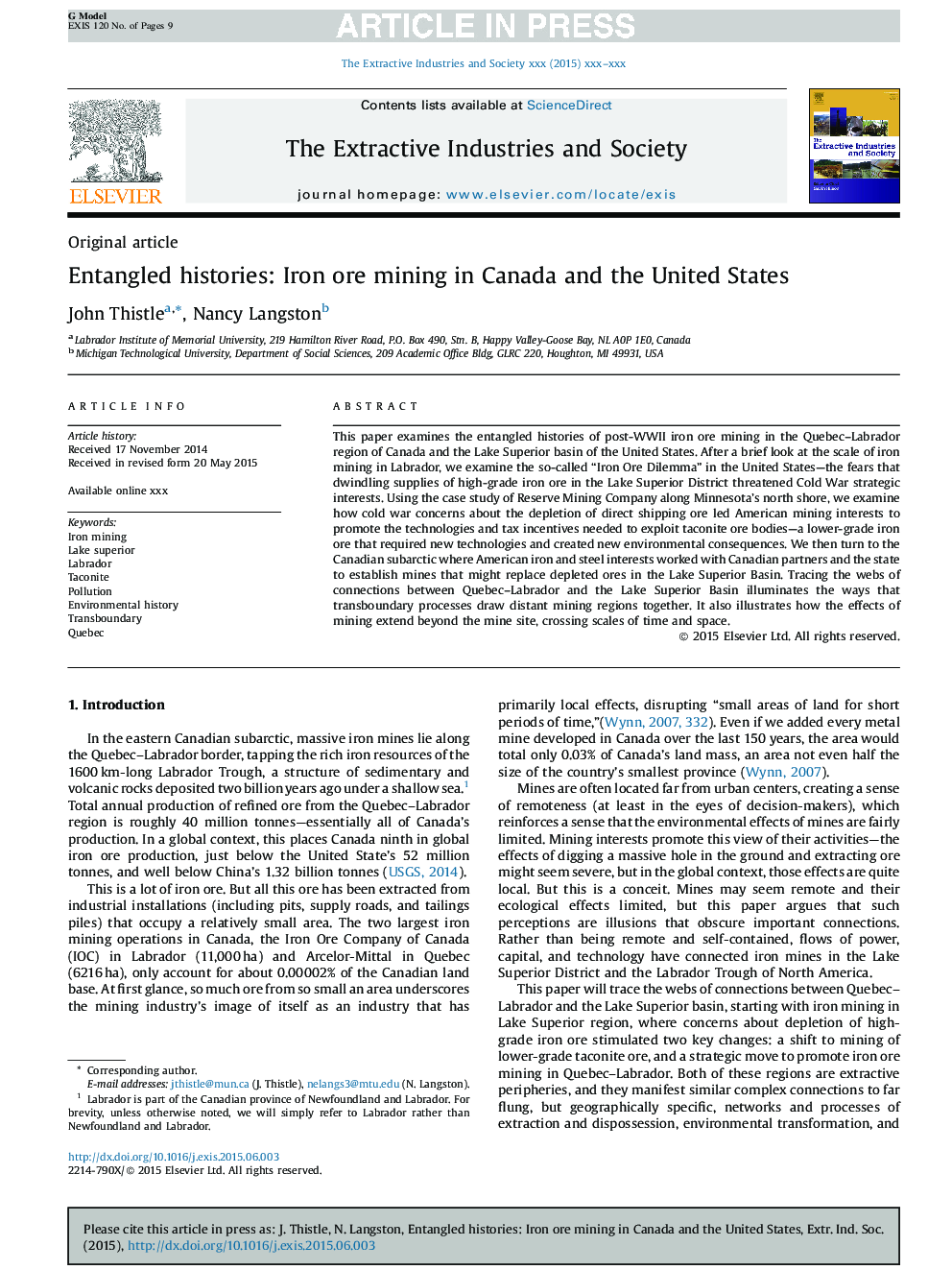| Article ID | Journal | Published Year | Pages | File Type |
|---|---|---|---|---|
| 10502196 | The Extractive Industries and Society | 2016 | 9 Pages |
Abstract
This paper examines the entangled histories of post-WWII iron ore mining in the Quebec-Labrador region of Canada and the Lake Superior basin of the United States. After a brief look at the scale of iron mining in Labrador, we examine the so-called “Iron Ore Dilemma” in the United States-the fears that dwindling supplies of high-grade iron ore in the Lake Superior District threatened Cold War strategic interests. Using the case study of Reserve Mining Company along Minnesota's north shore, we examine how cold war concerns about the depletion of direct shipping ore led American mining interests to promote the technologies and tax incentives needed to exploit taconite ore bodies-a lower-grade iron ore that required new technologies and created new environmental consequences. We then turn to the Canadian subarctic where American iron and steel interests worked with Canadian partners and the state to establish mines that might replace depleted ores in the Lake Superior Basin. Tracing the webs of connections between Quebec-Labrador and the Lake Superior Basin illuminates the ways that transboundary processes draw distant mining regions together. It also illustrates how the effects of mining extend beyond the mine site, crossing scales of time and space.
Related Topics
Life Sciences
Environmental Science
Management, Monitoring, Policy and Law
Authors
John Thistle, Nancy Langston,
